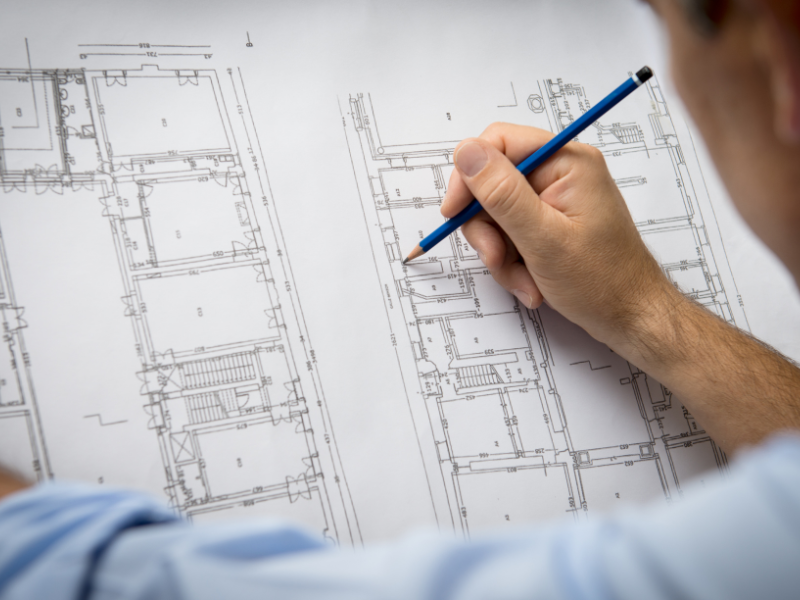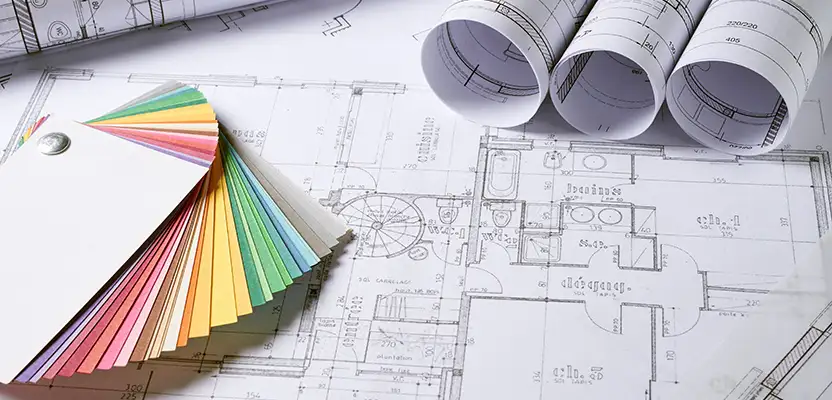Architect Interview Questions You Should Be Ready to Answer
Architect Interview Questions You Should Be Ready to Answer
Blog Article
Understanding the Diverse Career Paths Available for Aspiring Architect
As an ambitious Architect, you have a world of career courses waiting for you. Each course provides one-of-a-kind challenges and chances to apply your creative thinking and technological know-how. Whether you're drawn to conventional design or the subtleties of lasting style, there's a niche that straightens with your rate of interests. Comprehending these varied choices can form your professional trip, but which instructions will you pick to check out initially?
Traditional Design: Creating Buildings and Frameworks
Conventional style concentrates on making structures and structures that blend performance with visual allure. As you discover this field, you'll value the elaborate equilibrium between form and purpose. You'll learn to draw motivation from historical styles, integrating elements like balance, materials, and craftsmanship. Your designs can show cultural heritage, showcasing local traditions while meeting contemporary requirements.
You'll create abilities in composing, model-making, and website evaluation, permitting you to visualize and interact your ideas effectively. Involving with customers, you'll need to recognize their vision and translate it right into feasible designs.
Moreover, constructing codes and sustainability methods are essential in your work, guaranteeing your structures are risk-free and ecologically friendly. As you expand in your profession, you'll locate chances in household, commercial, or perhaps reconstruction projects, each offering special challenges. Accepting traditional architecture leads the way for a meeting job that admires the past while forming the future.
Urban Planning: Forming Areas and Public Spaces
As an ambitious Architect, you can play a necessary duty as a city organizer, changing just how neighborhoods function and communicate. By employing community involvement strategies, you'll assure that locals have a voice fit their setting. Plus, incorporating lasting style principles will certainly assist create rooms that not only satisfy today's needs but likewise protect the future.
Function of Urban Planners
While many may consider architects as the sole dreamers behind structures, city planners play a necessary duty in shaping the wider landscape of neighborhoods and public rooms. They evaluate land use, zoning regulations, and neighborhood requires to create sustainable settings that boost high quality of life. By teaming up with different stakeholders, you'll aid create parks, transportation systems, and suburbs that promote social communication and accessibility. Urban organizers also concentrate on ecological considerations, making sure that growths incorporate green areas and support biodiversity. Your know-how in spatial design and neighborhood characteristics allows you to envision future growth while preserving cultural heritage. In this important duty, you'll directly influence just how people experience their surroundings, making every task an opportunity for positive adjustment.
Area Engagement Techniques
Reliable neighborhood engagement techniques are important for city coordinators to guarantee that the voices of citizens are heard and valued in the planning procedure. To foster purposeful dialogue, you should prioritize open online forums and workshops where neighborhood participants can share their concepts and concerns. By proactively including and paying attention feedback, you'll develop spaces that show the neighborhood's needs, eventually leading to even more sustainable and effective urban atmospheres.
Sustainable Design Concepts
When making metropolitan areas, incorporating lasting layout principles is critical for creating atmospheres that thrive both ecologically and socially. Consider integrating green spaces, like yards and parks, to enhance biodiversity and enhance air quality.
Creating with water preservation in mind is additionally key-- think of rainfall gardens and permeable surfaces to manage stormwater. Involving neighborhood participants throughout the preparation procedure guarantees that the rooms you create meet their needs and motivate social communication. By embracing these principles, you'll add to lively, sustainable city landscapes that benefit every person.

Landscape Style: Producing Lasting Exterior Environments
As you explore landscape design, you'll find crucial layout concepts that create functional and beautiful outside rooms. Sustainable techniques play an essential role in making certain these environments prosper while lessening ecological impact. And also, you'll discover a selection of occupation chances that allow you to make an actual distinction in just how individuals connect with nature.
Design Principles in Landscape
Understanding design principles in landscape architecture is necessary for creating sustainable outdoor atmospheres that integrate with nature. You'll need to consider aspects like range, equilibrium, and percentage to assure your designs really feel natural and welcoming. In addition, pay focus to seasonal changes, making with materials that match the surroundings year-round.
Sustainable Practices Introduction
Sustainable practices in landscape design not only concentrate on aesthetics but also prioritize environmental health and wellness and resource preservation. You can design spaces that promote soil health and wellness, such as utilizing natural products and exercising permaculture principles. Inevitably, these practices assure your layouts benefit both people and the setting for years to come.
Occupation Opportunities Exploration
With a strong structure in sustainable methods, landscape style uses a range of job paths that enable you to make a purposeful effect on the setting. You could function as a landscape developer, creating visually pleasing and functional exterior rooms, or focus on environmental repair, assisting to revitalize damaged communities. Urban planners frequently work together with landscape architects to create eco-friendly areas in city settings, boosting city livability. If you're passionate about education and learning, consider becoming a landscape design teacher, inspiring future generations. In addition, you may function with nonprofits concentrated on environmental sustainability or participate in study to introduce new techniques. Each path not just forms lovely settings but also cultivates a much healthier world for future generations.
Sustainable Design: Concentrating on Eco-Friendly Practices
As you discover your career in design, welcoming eco-friendly techniques can set you apart in a competitive area. see this website Lasting style concentrates on developing buildings that lessen environmental impact while improving owner well-being. By incorporating renewable products, energy-efficient systems, and sustainable building strategies, you'll contribute to a greener future.
Begin by acquiring knowledge of green accreditations like LEED or BREEAM, which can boost your qualifications. Think about how natural light, air flow, and thermal performance can optimize layout. Collaborate with engineers and ecological specialists to innovate services that lower waste and save resources.
Don't neglect the relevance of neighborhood involvement-- appealing neighborhood stakeholders can inspire styles that balance with the atmosphere. As clients progressively prioritize sustainability, your experience in green techniques will not just draw in jobs but also fulfill your interest for liable design. Welcome this crucial aspect of the profession, and watch your career thrive.
Historic Conservation: Shielding and Restoring Cultural Heritage
While you commence on your architectural trip, think about his response the important duty of historic preservation in keeping our social heritage. This field concentrates on the protection and repair of considerable buildings, sites, and structures that inform the tales of our past. By engaging in historical conservation, you'll aid protect the building legacy that shapes community identification.
As a historic conservation Architect, you'll assess historical significance and analyze the problem of structures. You'll work closely with conservationists and chroniclers to assure genuine reconstruction methods are utilized. This career course enables you to mix creativity with study, enabling you to develop solutions that respect initial products and craftsmanship.
Your job not just adds to sustainability by reusing existing structures however additionally fosters a sense of pride within areas. Accepting this path will aid additional hints you come to be a guardian of history, protecting the stories and aesthetics that enhance our lives.
Inside Design: Enhancing Indoor Spaces
Historic conservation and interior design both share a dedication to enhancing the constructed setting, yet they concentrate on different elements. While historical conservation emphasizes preserving a structure's social and historical worth, interior style absolutely nos in on enhancing interior areas for performance and visual appeals.
As a hopeful Architect, you'll discover that indoor style permits you to mix imagination with technical skills. You'll develop areas that not only look excellent yet additionally promote comfort and efficiency. This field involves recognizing exactly how light, shade, and products connect within a space, impacting state of mind and usability.
You'll service different jobs, from household homes to industrial workplaces, ensuring that each environment meets the demands of its residents. By focusing on customer experience, you can change interiors right into motivating and functional rooms, making a considerable impact on exactly how individuals connect with their environments. Accept the possibility to improve interior environments and shape the means individuals work and live.
Industrial Style: Combining Functionality With Looks
Industrial design plays an important duty in creating products that effortlessly blend aesthetic appeals with capability, making sure that what you use daily is not just visually appealing yet likewise functional. As an ambitious Architect, you could engage yourself in this area, concentrating on developing everything from furniture to consumer electronic devices. Your job involves understanding customer needs, products, and making processes, permitting you to produce cutting-edge solutions that enhance everyday experiences.
In commercial layout, you'll commonly team up with designers, manufacturers, and marketing experts, making sure that your styles are not only beautiful but additionally practical. This job path uses a vibrant setting where creative thinking satisfies practicality, making it a gratifying option for engineers interested in shaping the items of tomorrow.
Regularly Asked Questions
What Educational Qualifications Do I Need to End Up Being a Designer?
To become a designer, you'll require an expert level in style, typically a Bachelor's or Master's. Additionally, you'll need to complete an internship and pass the Architect Enrollment Evaluation to exercise legally.
Are There Qualification Needs for Different Building Occupation Paths?
Yes, there're accreditation needs for numerous building paths. Architect. You'll require to pass examinations, full teaching fellowships, and often seek specialized training, relying on your selected emphasis, like landscape design, urban style, or historical conservation
What Software Skills Are Crucial for Architects Today?

Just How Can I Gain Practical Experience While Researching Architecture?
You can acquire practical experience by interning at building companies, taking part in style competitors, offering for community tasks, or collaborating with classmates on real-world tasks. These possibilities improve your abilities and construct important links in the industry.
What Job Opportunities Exist Outdoors Typical Style Firms?
You can explore different work possibilities outside conventional architecture firms, like city preparation, interior decoration, landscape architecture, building and construction management, realty advancement, and even duties in sustainability consulting. Each deals one-of-a-kind challenges and rewards.
Whether you're attracted to standard architecture or the nuances of sustainable design, there's a specific niche that aligns with your interests.When developing urban rooms, including lasting design principles is critical for producing settings that thrive both environmentally and socially.As you check out landscape design, you'll find essential layout concepts that create lovely and practical outside areas.Comprehending style principles in landscape style is essential for developing lasting outdoor settings that balance with nature.In industrial layout, you'll usually team up with producers, designers, and marketing experts, guaranteeing that your designs are not only stunning yet also practical.
Report this page